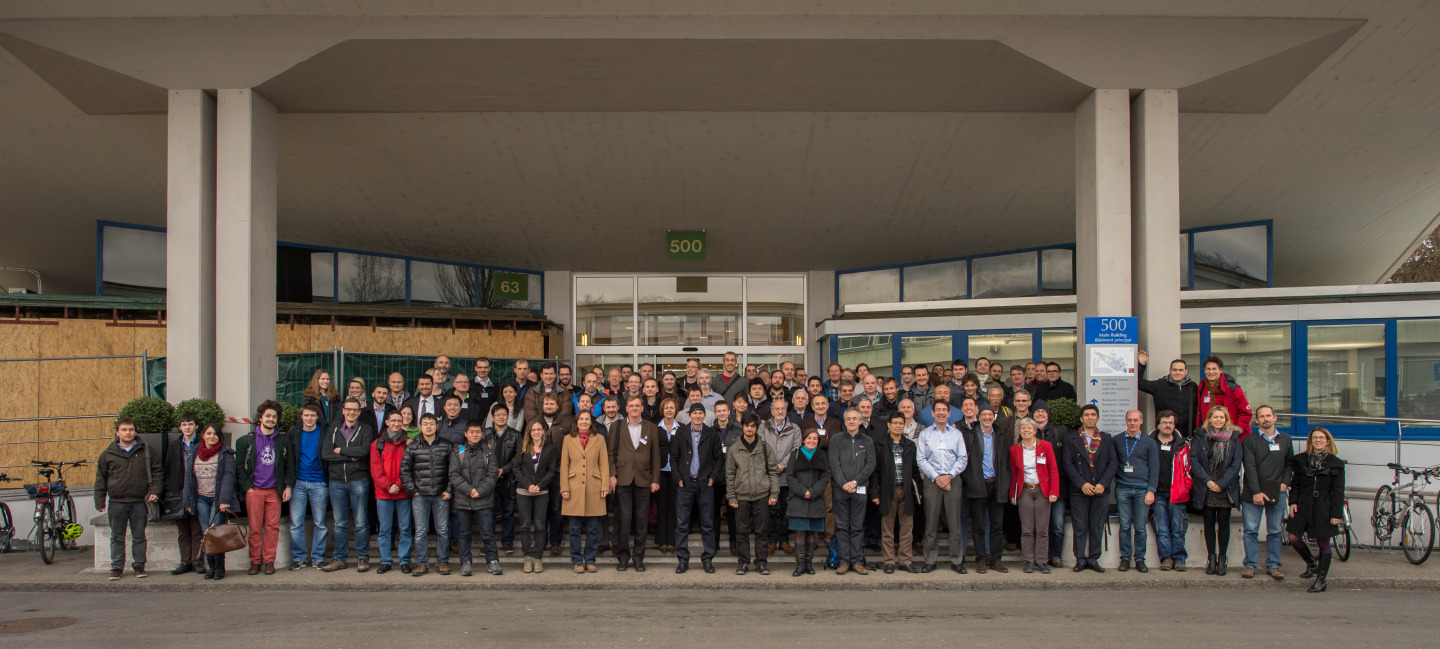At the Compact Linear Collider (CLIC) test facility you see none of the heavy-duty steel pipes that characterise the dipole magnets of the LHC. Instead – true to the acronym– you find a compact accelerator module, fed by high-power waveguides, cables and cooling tubes, which sits elegantly on a custom-made mechanical structure that can be moved in all directions to ultra-high precision. The module will test out all the little details that turn a metal structure into a functioning accelerator part – frequency, losses, damping, acceleration, deceleration.
CLIC is one of the potential follow-up projects to the LHC, alongside the International Linear Collider and the Future Circular Collider studies. It is designed to produces head-on collisions between electrons and positrons accelerated in a 50-kilomtre-long straight line using a unique acceleration technique where one particle beam drives another like a gigantic power converter. The project published its Conceptual Design Report in 2012, proving that the technologies planned for this ultra-precise machine are working. Now it is in a project preparation phase, where these technologies are tested, improved, made more efficient and more reliable, and where physicists and engineers take a closer look at the cost of the individual components. All this is where the new module comes in.
It’s the first module that has been integrated into the test facility and has all the functions of future CLIC modules. Many of the different techniques and technologies needed for CLIC’s sophisticated drive-beam acceleration – where one beam of electrons pushes another by transferring its energy – have been tested individually in the past. The CLIC researchers have proven that they can generate the high-current drive beam; that they can accelerate it and slow it right down again for the energy transfer to the main beam; that the beam can have the designated gradient and quality; and that the energy from the drive beam can actually be transferred to the main beam at the right frequency through the power-extraction and transfer structures. They have also shown that the accelerating structure can reach a gradient of 105 MV/m at a pulse length of 240 nanoseconds and with a low breakdown rate in separate high-power tests.

Now the CLIC team have put it all together in the prototype module, added CLIC-type alignment systems, accelerating structures with higher-order-mode damping, and integrated diagnostics tools such as wakefield monitors – and they are testing it with beam. “It’s a complex system, and our very first experiments look promising,” says CERN’s Steffen Doebert, who is part of the team that developed the module. “We have to check all the connections and calibrate the module before installing a second super accelerating structure consisting of two accelerator units.”
The two super structures will be installed on the same girder and then tested with beam (another two modules are being built and will be tested without beam). With the help of the diagnostic tools integrated into the module, which can detect very small fields, the researchers know where the beam is at any time within the structure. They can also make beam-based corrections thanks to a very precise alignment system developed by the CERN Metrology Group and a silicon carbide support that can be adjusted in all directions. “After all we need to be precise down to ten microns,” says Doebert.
The module development has been a large effort within the CLIC collaboration with contributions from outside institutions and CERN groups. Their annual collaboration meeting took place at CERN this week, 26 - 30 January 2015.

